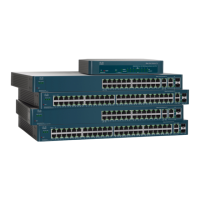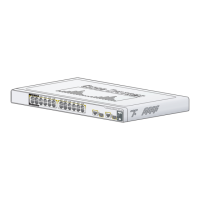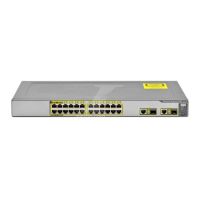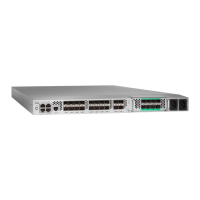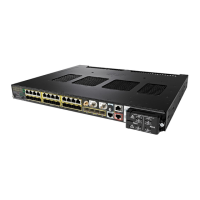IP Configuration
Overview
341 Cisco 500 Series Managed Switch Administration Guide
18
Some features are only available in Layer 2 or Layer 3 system mode, as described
below:
• In Layer 2 system mode (only Sx500 devices), the device operates as a
Layer 2 VLAN-aware device, and has no routing capabilities.
• In Layer 3 system mode, the device has IP routing capabilities as well as
Layer 2 system mode capabilities. In this system mode, a Layer 3 port still
retains much of the Layer 2 functionality, such as Spanning Tree Protocol
and VLAN membership.
• In Layer 3 system mode on Sx500 devices only, the device does not
support MAC-based VLAN, Dynamic VLAN Assignment, VLAN Rate Limit,
SYN Rate DoS Protection, and Advanced QoS Policers.
To configure the system mode (Layer 2 or Layer 3) for Sx500 devices, see the
System Mode and Stack Management page
NOTE Switching from one system mode (layer) to another (on Sx500 devices) requires a
mandatory reboot, and the startup configuration of the device is then deleted.
Layer 2 IP Addressing
NOTE This section is only relevant for Sx500 devices.
In Layer 2 system mode, the device has up to one IPv4 address and up to two IPv6
interfaces (either “native” interface or Tunnel) in the management VLAN. This IP
address and the default gateway can be configured manually, or by DHCP. The
static IP address and default gateway for Layer 2 system mode are configured on
the IPv4 Interface and IPv6 Interfaces pages. In Layer 2 system mode, the device
uses the default gateway, if configured, to communicate with devices that are not
in the same IP subnet with the device. By default, VLAN 1 is the management
VLAN, but this can be modified. When operating in Layer 2 system mode, the
device can only be reached at the configured IP address through its management
VLAN.
The factory default setting of the IPv4 address configuration is DHCPv4. This
means that the device acts as a DHCPv4 client, and sends out a DHCPv4 request
during boot up.
If the device receives a DHCPv4 response from the DHCPv4 server with an IPv4
address, it sends Address Resolution Protocol (ARP) packets to confirm that the IP
address is unique. If the ARP response shows that the IPv4 address is in use, the
device sends a DHCPDECLINE message to the offering DHCP server, and sends
another DHCPDISCOVER packet that restarts the process.
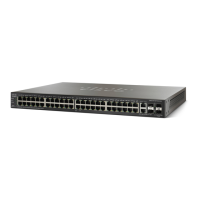
